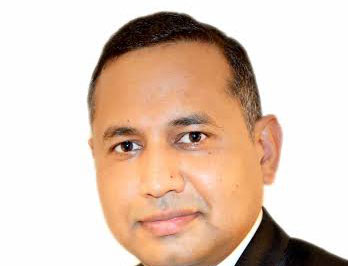March, 27, 2014

A study done by Microsoft in South East Asia on computers using pirated software show a 69% malware infection rate. The Software Company has found that firewall rules had been changed in 97% ofcomputers and 15% of DVDs, posing a definite threat to unsuspecting consumers.
Keshav Dhakad, Regional Director of IP and Cybercrime, Microsoft Asia-Pacific & Japan, Singapore,who was on a recent visit to Sri Lanka, said that these detections were foundon New PCs, which were purchased from computerstores pre-installedwith pirated software, and counterfeit DVDs, which were available to users for only a few dollars.
“The total number of malware infectioninstances were scary and South East Asia was the firstregional clustermarket we picked because of the very high levels of softwarepiracy. Every year, there are more NewPCssoldwith pirated software in the marketthan genuine ones and we wanted to find out if this is adding to cybercrimes. The answer was, yes. One thousand one hundred (1100)unique malware strains were detected from 282 samples and this was an eye opener” he said.
“At this point we became very concerned about how this unsecured supply chain can lead to cyber criminal activities. We took a look at firewall rules that were changed and windows updates that were disabled. These were not unintentional activities. This is done with a very clear maliciousintent of taking advantage of the vulnerabilitiesof non-genuine softwareand lack of awareness of the users to perpetrate cybercrime by way of gettingunauthorizedaccess to the computers, files, private information, passwords,bank/personal accountsetc.,” Keshav explained.
A consumer alert issued by theUS’sFBI says that once installed on a computer, malware can record a user’s keystrokes (capturing sensitive usernames and passwords) and steal personal identifiable information including birthdates, social security numbers, bank information etc, sending it straight back to criminals and hackers. It can even corrupt the data on a PC and turn on a webcam or microphone. Malware can also spread to other computers through removable media like thumb drives and emails sent to family, friends or professional contacts. It can spread through shared connections to homes, businesses or even a government network. Criminals can also use infected computers to launch attacks against other computers or websites via denial of service attacks.
Malware perpetrated cybercrimescan pose significant and sometimes life changing threatsto ordinary consumers, rob businesses of billions of dollars, disrupt critical infrastructure and government services, and leave one destituteand helpless, says Keshav Dhakad. He also went on to advise that the foundation of cyber security and online safety starts with procuring and using “clean and legal IT” (genuine software) from a trusted and secured IT supply chain.
According to several studies, the estimated cost of cyber crimes to consumers is US $ 113 billion a year. Every second 12 people are victims (nearly 400 million every year). One in five small and medium enterprises are targeted, 53% of the world’s securities exchanges were targeted in 2012 and the National Centre for Missing and Exploited Children has reviewed more than 90 million images and videos of child pornography as a result of cyber crime.
Microsoft, who recently launched their first of its kindCybercrime Centre, has till date taken down many of the largest botnet criminal syndicates in the world (Rustock, Zeus, Nitol, Citadel, ZeroAccess, etc.) in collaboration with Law Enforcement and Industry partners.Keshav concluded that “while cybercriminals will continue to evolve thecompany will also continue to invest in the latest tools and technologiesto fight cybercrime; increase their knowledge of the cybercriminal infrastructure; undertake pro-active cybercrimedisruption; build strong and secure products and cloud services, as well as forge strong public-private partnerships on cyber threat intelligence to create a secure environment for the public, governments and customers.
Video Story